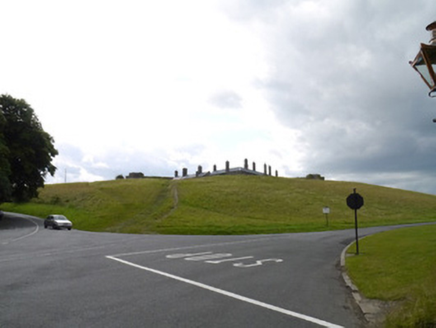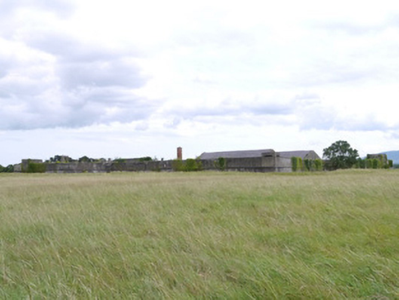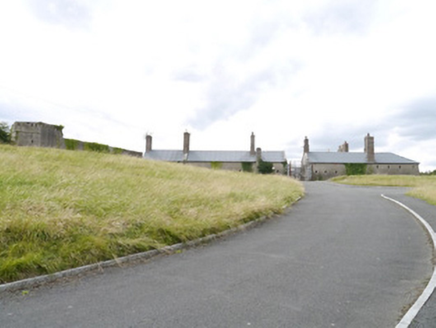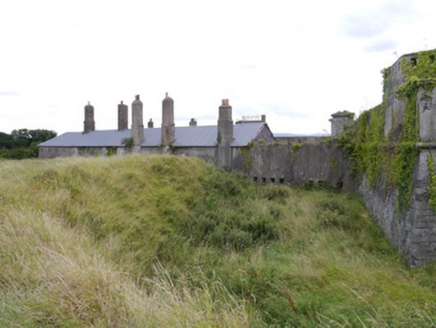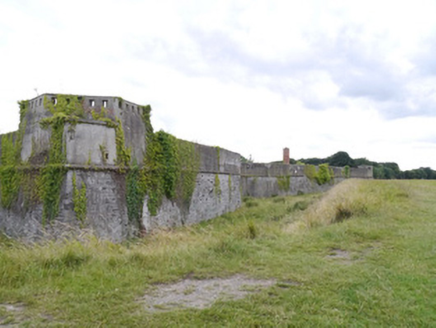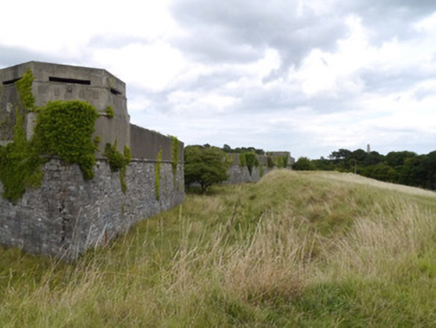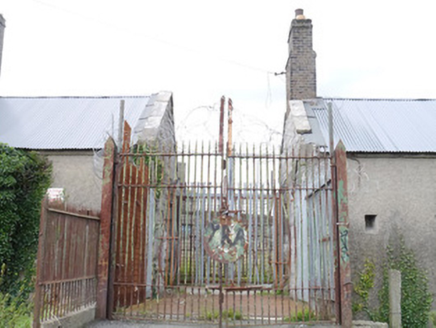Survey Data
Reg No
50060115
Rating
National
Categories of Special Interest
Architectural, Historical, Technical
Original Use
Magazine
Date
1730 - 1810
Coordinates
312176, 234458
Date Recorded
10/09/2014
Date Updated
--/--/--
Description
Freestanding magazine, built c.1735, modified c.1760 and 1801. Now disused. Basically square-on-plan, with four demi-bastions at angles, all but that to northwest topped by cement-rendered hexagonal watch-tower. Extended 1801 by additional triangular enclosure to east, bounded by two rows of two-storey barrack ranges having pitched corrugated-metal roofs, tall brick chimneystacks, roughcast walling and small aperture openings. Walls to main enclosure constructed in two sections, lower portion battered limestone rubble with limestone string course which supports cement-rendered brick rampart. Within walls are several ranges of original stone buildings, including the actual magazines, with pitched and mono-pitched slate roofs, dressed limestone walling with openings formed in brick and stone; magazines comprises of three adjoining parallel gabled ranges with brick-lined barrel vaulted chambers with doweled timber floors. Twentieth-century ranges including corrugated-metal Nissen hut. Entrance to eastern enclosure, comprising two consecutive pairs of gates and steel palisade fencing. Fort located on elevated site at southern side of Phoenix Park, surrounded by dry moat.
Appraisal
A mid-eighteenth-century magazine fort constructed in phases from 1734 to 1801, also containing twentieth-century structures. As such, the fort is representative of two centuries of military architecture, having originally been built to designs by John Corneille, on the orders of the Duke of Dorset, as a powder magazine located at a convenient distance from Dublin Castle and the Royal Barracks. Subsequently modified to designs by Francis Johnston, it continued in use until the mid-twentieth century. Although no longer in use, the structure retains a wealth of evidence attesting to its technical functions, including the original eighteenth-century magazine chambers. Surrounded by a dry moat in open land at the southern portion of Phoenix Park, the fort is a striking feature among a number of high-quality buildings in this historic urban park.
